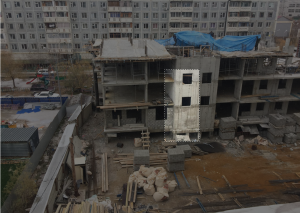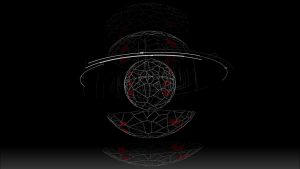I start this project by considering what aspects can be manipulated with the passage of second, minute and hour. So I come up with the idea of growing size, color and transparency. Based on simple arc shapes, the second, minute and hour arc will change all those aspects in different rate. The second hand, for example, will change most dramatically so it creates this exploding effect every minute.
preliminary sketch:

//Zining Ye
//15104 lecture 1 recitation C
//ziningy1@andrew.cmu.edu
//Project-06
function setup() {
createCanvas(480, 480)
}
function draw() {
var s = second();
var h = hour();
var m = minute();
var centerx= width/2;
var centery= height/2;
var adjust = 90;
var gunit = 10; //growing rate
angleMode(DEGREES);
background(220);
// second hand(arc)
// convert the 60 seconds to 360 degree
var slength = map(s,0,59,0,359);
//the color changes with the second changes
fill(5*s,s*2,s*2,2*gunit*(s/4));
noStroke();
//draw the second arc, the size will grow with time
arc(centerx,centery,gunit*s,gunit*s,0-adjust,slength-adjust);
//convert the 60 minutes to 360 degree
var mlength = map(m,0,59,0,359);
//color changes as the second hand
fill(4*m,m,m,gunit*(m/4));
noStroke();
//size also grow with time with a smaller rate
arc(centerx,centery,5*m,5*m,0-adjust,mlength-adjust);
//convert the 24 hours to 360 degrees
var hlength = map(h,0,23,0,359);
fill(4*h,h/2,h/2,gunit*h/3);
noStroke();
//size grow in a even smaller rate than minute hand
arc(centerx,centery,4*h,4*h,0-adjust,hlength-adjust)
}
![[OLD FALL 2017] 15-104 • Introduction to Computing for Creative Practice](../../../../wp-content/uploads/2020/08/stop-banner.png)






 Noise Field is an interactive, mouse-based random activity program running on p5.js. As a function, Noise Field uses Perlin Noise — a gradient-based procedural algorithm that increases the believability of computer-generated animations –and noise parameters based on mouse movement and placement to generate colored ellipses from central points. With that being said, randomness is present as clicking produces a random set of parameters for the movement of the ellipses.
Noise Field is an interactive, mouse-based random activity program running on p5.js. As a function, Noise Field uses Perlin Noise — a gradient-based procedural algorithm that increases the believability of computer-generated animations –and noise parameters based on mouse movement and placement to generate colored ellipses from central points. With that being said, randomness is present as clicking produces a random set of parameters for the movement of the ellipses.
